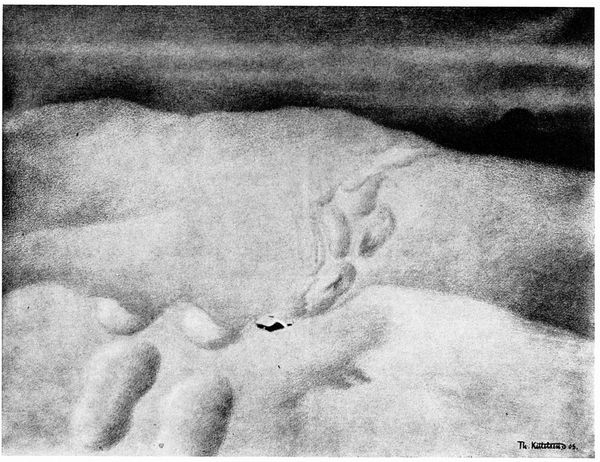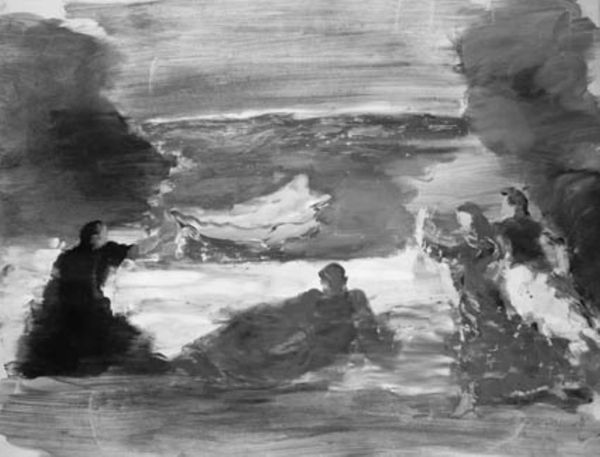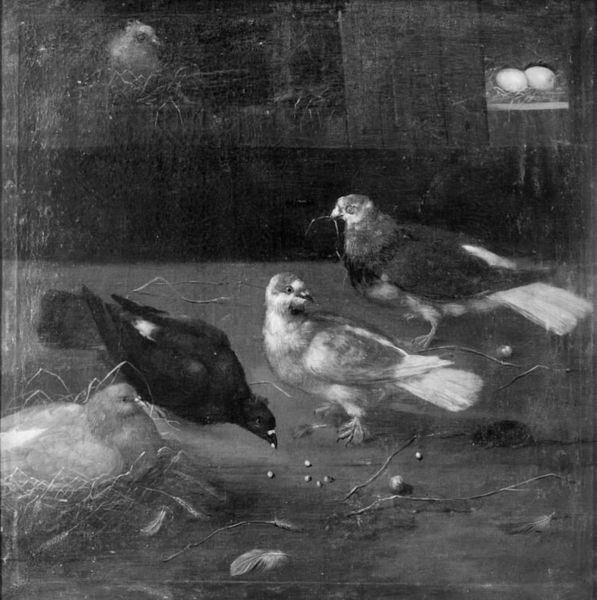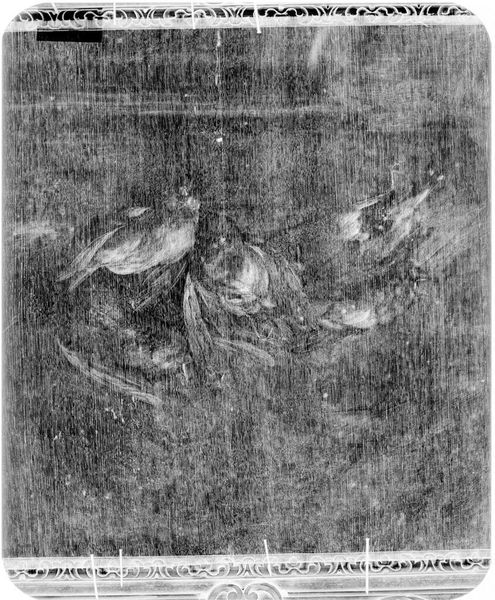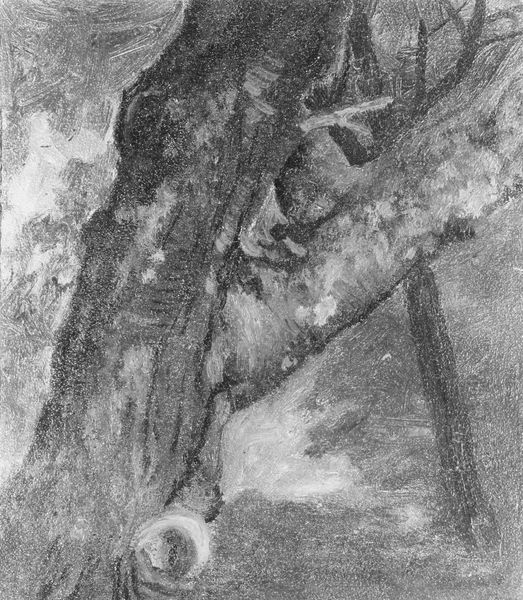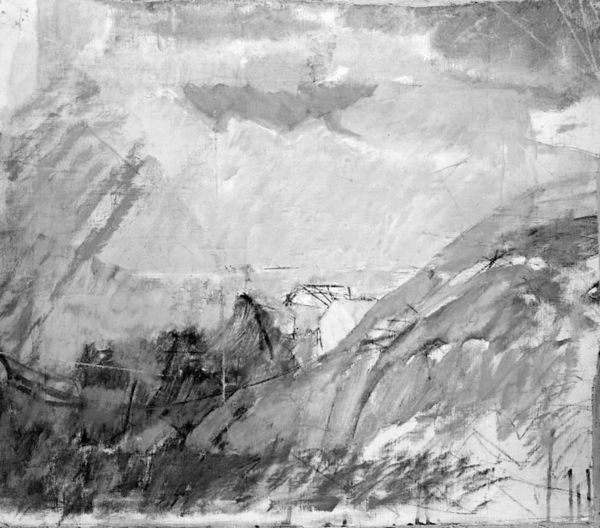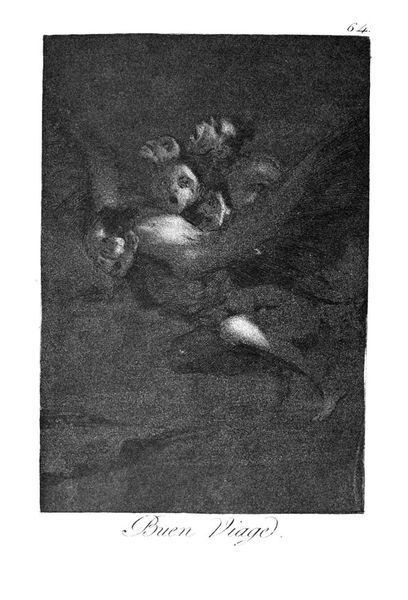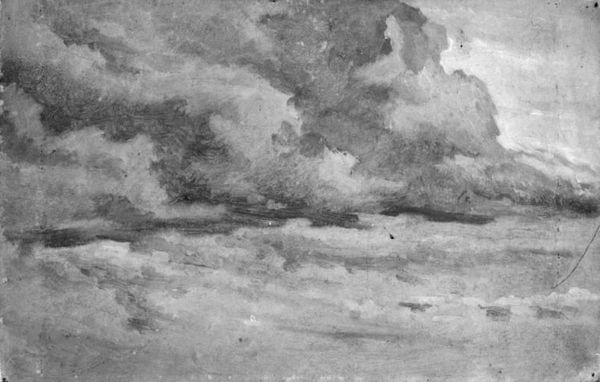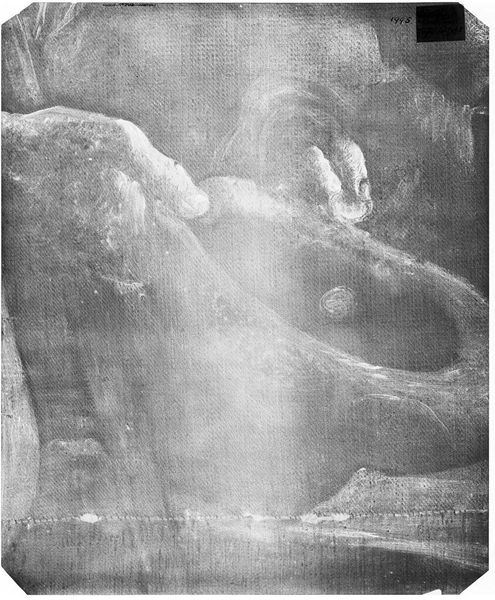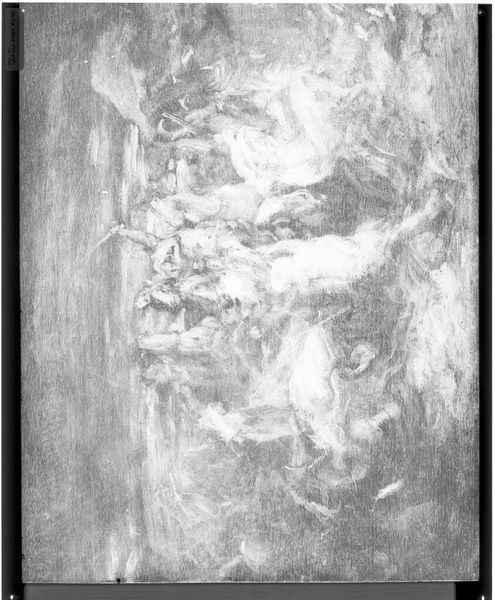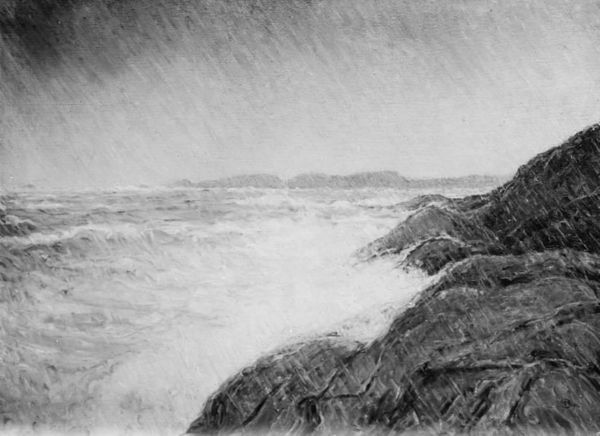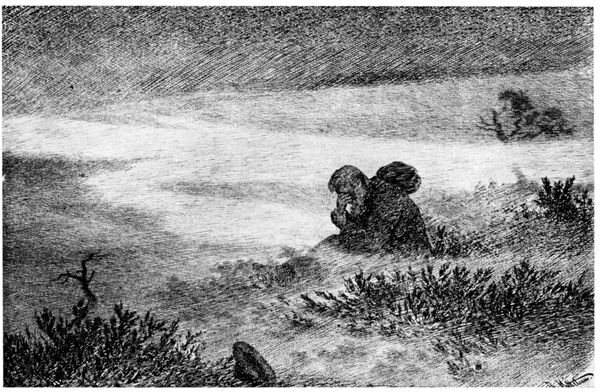
Dimensions: height 152 cm, width 276 cm
Copyright: Rijks Museum: Open Domain
Curator: This monochromatic painting at the Rijksmuseum, titled "IJsberen beklimmen een ronddrijvende sloep," translating to "Polar Bears Climbing a Drifting Boat," is attributed to John Macallan Swan, likely created between 1870 and 1910. Editor: A somber palette dominates the scene, all greyscale and heavy strokes. It projects a powerful feeling of the sublime – those turbulent waves are about to overtake that small craft. Curator: Absolutely. Consider how polar bears often symbolize resilience, adaptation, and survival. This is heightened by the composition featuring several of the mammals mounting wreckage in stormy waters; their collective struggle speaks to both primal endurance and ecological disruption. It reflects humanity's fragile relationship with nature and the precarious state of these arctic creatures in the face of an environment pushed to its limit. Editor: Visually, the lack of color intensifies the textures. We are seeing a symphony of shapes, rough yet precise. The rhythm set by the waves carries one's gaze upward to meet that looming, dark vessel. Curator: Indeed, and if we allow the gaze to be carried beyond merely the aesthetic into cultural understanding, we find this is not just an image of majestic creatures contending against brutal environment. The painting seems like a portent of environmental degradation – the "drifting boat" and sea becoming emblems of helplessness in the face of larger environmental issues that even now confront our social consciousness as they did the artist's original audience, who might not yet have had ways to visualize ecological precarity so forcefully. Editor: Very astute observation; in total agreement that the cultural encoding is powerful. Looking through it with this perspective really changes my perception of Swan's design elements too; seeing how that turbulent upward thrust literally threatens both the wildlife and the discarded boat gives new weight to its artistic effect. It seems a truly remarkable integration of aesthetic expression and environmentalist statement; this piece really repays attentive interpretation! Curator: Glad to hear it, and this is a reminder that our interpretations must always accommodate change over time – art, after all, serves as our civilization's visual repository for dreams and fears from prior times!
Comments
No comments
Be the first to comment and join the conversation on the ultimate creative platform.
